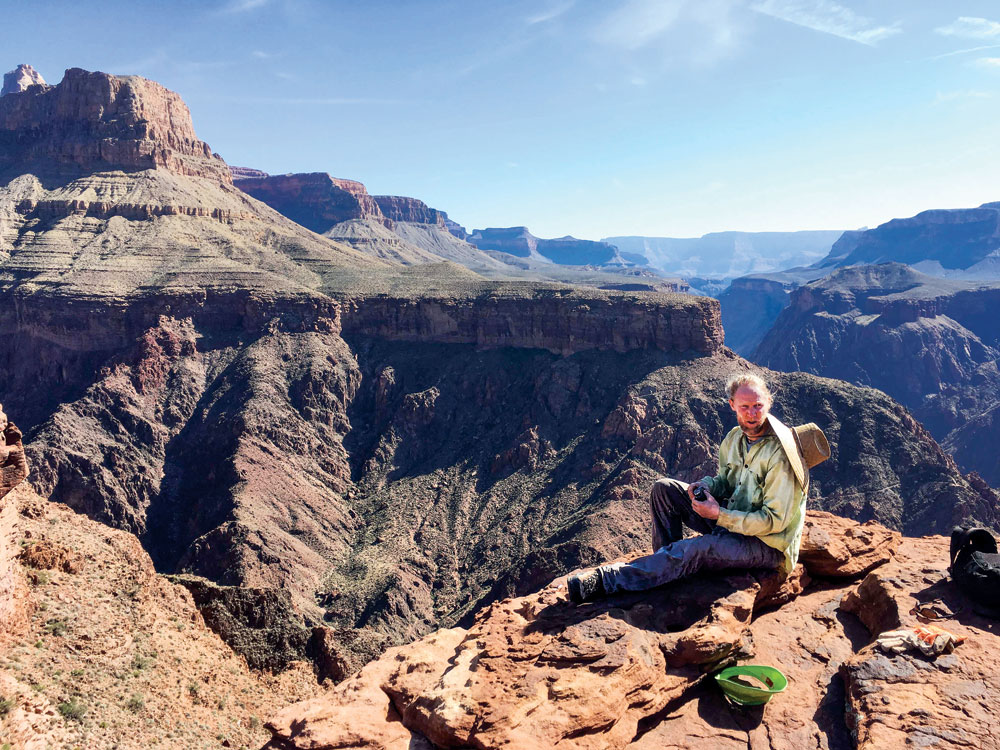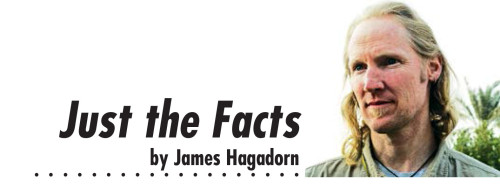
Scientific thinking is relevant, helpful, and something that we all can do. Over the past five years I’ve employed this approach as a columnist, by setting aside my biases and sticking to “Just the Facts” to attract you to topics you may not have had interest in before—as well as familiar ones that I hoped you might reexamine.
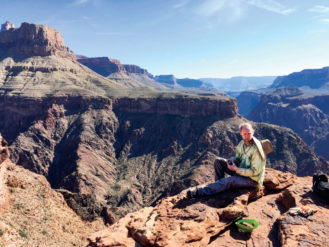
James Hagadorn surveys Rock Exposures in Grand Canyon.
In the process, we’ve busted a lot of myths that were veiled as “common knowledge.” We’ve also uncovered useful information and gained some pride in our community’s accomplishments and history. See https://frontporchne.com/category/just-the-facts/ for some examples.
Today I’m writing to let you know that I’m going to step away from writing this column for a while. My departing request? In these times of “alternative facts,” please don’t hesitate to channel your inner scientist, or to employ scientific thinking in your everyday life.
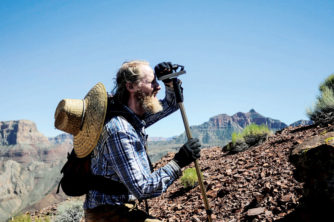
James Hagadorn measures a section in the Grand Canyon.
Start by pursuing your curiosity or seeking to understand something that puzzles you. Better yet, question an assumption or an assertion. Follow by reading about your topic, analyzing what’s known about it, and seeing what it tells you. Along the way, question where your information comes from—has it been vetted by someone with expertise in that field? How do we actually know that?
Maybe take it one step further, talk to a scientist to see what they know, perhaps sharing your thoughts over a beer. You might be surprised at what you learn, and you might even make a new friend!
If you’re like me, learning what you don’t know is fun, interesting, and often surprising. Especially when we’re wrong. Sometimes scientific thinking helps us reach decisions that impact our families and can help our community.
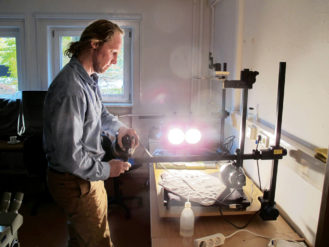
Hagadorn photographs fossil jellyfish in the Munich Museum in Germany.
At the very least, it’s helped me become a better informed citizen of Colorado. I hope that scientific thinking can do the same for you.
James Hagadorn, Ph.D., is a scientist at the Denver Museum of Nature & Science. Suggestions & comments welcome at jwhagadorn@dmns.org.

